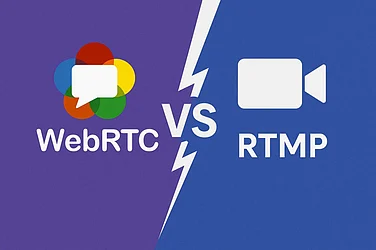The National Pension System (NPS) allows subscribers to build a retirement corpus through investments handled by professional fund managers. Pension Fund Managers (PFMs) manage your NPS contributions across four asset classes: Equity (E), Corporate debt (C), Government securities (G) and Alternative assets (A).
With the Pension Fund Regulatory and Development Authority (PFRDA) permitting subscribers to choose different fund managers for different asset classes, selecting the right PFMs in 2025 requires careful evaluation.
Understand the new flexibility in choosing fund managers
Prior to 2022, an NPS subscriber had to pick a single fund manager for all asset classes.
Now, under the active choice option, you select a Pension Fund Manager and allocate your investment percentage across equity, corporate debt, government securities, and alternative assets (Scheme A) within the manager’s schemes. This flexibility allows you to actively allocate investments across asset classes according to your preference, leveraging the chosen PFM’s management expertise. However, once you choose your Pension fund managers, you can change them only once per financial year, so review choices thoughtfully.
Know Who the Fund Managers Are
In 2025, there are several registered PFMs under NPS, including Aditya Birla Sun Life, Axis, Birla, DSP, HDFC Pension Fund, ICICI Prudential, Kotak Mahindra, LIC Pension Fund, SBI Pension Fund and UTI Retirement Solutions. Each manages multiple schemes across the four asset classes. To narrow your choices, examine their long‑term performance and consistency.
Comparing Historical Returns
The table below summarises which PFMs delivered strong returns in NPS Tier‑I schemes as of May 2025 (data source: NPS Trust):
Asset class & scheme | High‑performing fund managers | What should you know |
Equity (Scheme E) | HDFC ICICI UTI | These managers consistently recorded 5‑year and 10‑year returns above 12 %. SBI offered slightly conservative equity exposure but remains reliable. |
Corporate debt (Scheme C) | Kotak LIC | Kotak and LIC showed steady 3‑ and 5‑year performance around 7.5–9 % making them solid choices for moderate risk. ICICI and SBI are close followers with minimal volatility. |
Government securities (Scheme G) | SBI LIC | Both achieved long‑term performance nearing 9 % ideal for low‑risk investors. |
The ranking of PFMs across different schemes compiled by NPS Trust also shows HDFC consistently at the top, with its schemes ranking first or second in equity, corporate debt and government securities.
LIC, SBI, and Aditya Birla Sun Life have multiple schemes frequently appearing in top ranks, while UTI and Birla generally perform well in selected asset classes but may rank lower in others. When choosing a single manager across all asset classes (for simplicity), favour those with consistently high ranks, such as HDFC or LIC.
Evaluate Fund Size And Volatility
Larger assets under management (AUM) and subscriber base can indicate trust, but very large funds may adopt conservative strategies. Evaluate AUM relative to returns to ensure the manager is not compromising performance for scale. Also assess standard deviation if available; higher volatility may not suit conservative investors.
Check Risk Tolerance And Investment Horizon
Choosing fund managers depends on your risk appetite:
Aggressive investors may prefer HDFC or ICICI for equity exposure because of their superior long‑term returns.
Moderate investors can combine Kotak or LIC for corporate bonds and SBI or LIC for government securities to balance risk and return.
Conservative investors might allocate more to government securities and corporate debt while limiting equity exposure; they choose PFMs with lower volatility and stable returns.
Remember, you can split contributions among asset classes and assign the best manager to each. This approach diversifies risk and maximises potential returns.
Perform Annual Reviews And Rebalancing
NPS allows you to change your fund manager once a year, so revisit your choices annually. Track the one‑, three‑ and five‑year performance of your selected schemes, and compare with peers. If a manager underperforms consistently, switch to a better performer.
Additionally, adjust your asset allocation over time based on age and market conditions; for example, gradually reduce equity exposure as you near retirement.
Practical Steps to Choose NPS Fund Managers in 2025
Identify your goals and risk profile: Assess your retirement age, contribution capacity and tolerance for market fluctuations.
Review the latest returns and rankings: Consult the NPS Trust to compare PFMs across schemes.
Diversify across asset classes: Allocate contributions among equities, corporate debt and government securities; assign the top manager to each category.
Check fund size and volatility: Large AUM suggests stability, but ensure returns are not compromised.
Evaluate costs: Although NPS management fees are low, verify each PFM’s investment management fee from official sources; lower costs can boost net returns.
Monitor and adjust annually: Use the yearly switch option to replace underperforming managers and rebalance your portfolio.
Conclusion
Selecting an NPS fund manager in 2025 involves more than picking a familiar name. Use the flexibility provided by PFRDA to diversify across asset classes and choose managers with strong and consistent long‑term returns. Track performance annually and be prepared to switch if your chosen PFM lags peers.
With careful evaluation and regular reviews, your NPS investment can become a powerful tool for building a secure retirement corpus.
Disclaimer: This is a sponsored article. All possible measures have been taken to ensure accuracy, reliability, timeliness and authenticity of the information; however Outlookindia.com does not take any liability for the same. Using of any information provided in the article is solely at the viewers’ discretion.

























